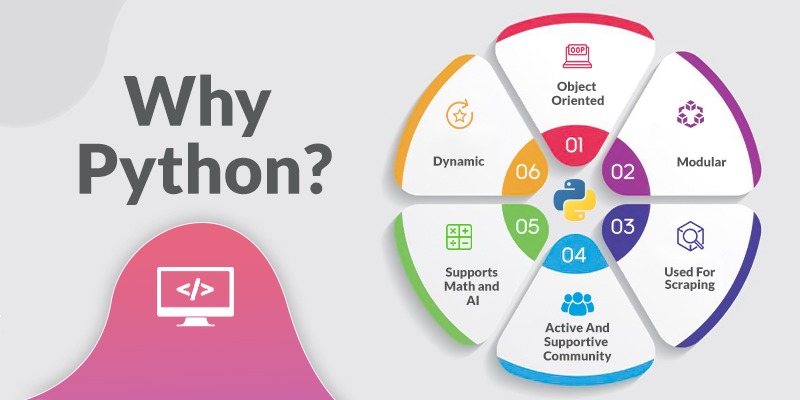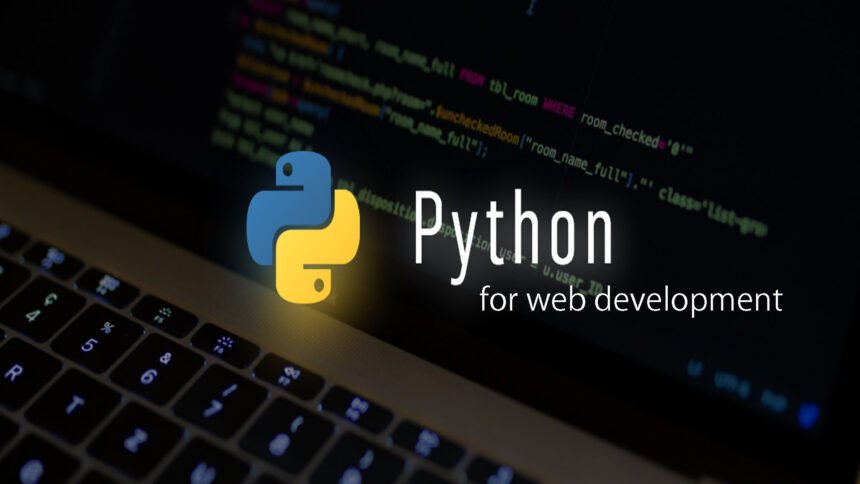Python is one of the most popular programming languages in the world today. Known for its simplicity, readability, and versatility, Python has become a go-to language for beginners and experienced developers alike.
From web development to data science, artificial intelligence, and automation, Python has applications across multiple industries. This guide will walk you through the fundamentals of Python programming, covering its basic syntax, key features, and practical examples.
Why Learn Python?
Before diving into the details, it’s important to understand why Python has gained so much traction. Here are a few reasons why learning Python is beneficial:
- Beginner-Friendly: Python’s syntax is designed to be intuitive and easy to read, which makes it a great starting point for those new to coding.
- Versatility: Python can be used for web development, data analysis, machine learning, automation, and more.
- Large Community Support: With a vast user base, Python’s community provides excellent support for developers, offering tutorials, libraries, and frameworks.
- Cross-Platform: Python works on various platforms, including Windows, macOS, and Linux, making it highly adaptable.
- Open Source: Python is free to use and has an extensive library of open-source tools and packages.
Python Installation and Setup
Step 1: Download Python
To start coding in Python, you’ll need to download the latest version of Python from the official Python website. Python is available for all major operating systems.
Step 2: Install Python
Once you’ve downloaded the installer, follow the instructions specific to your operating system to install Python. During the installation, make sure to check the option to “Add Python to PATH” so that you can run Python commands from the command line.
Step 3: Verify Installation
To ensure that Python is installed correctly, open a terminal or command prompt and type:
python --versionThis will display the installed Python version.
Python Basics: Syntax and Structure

Python’s simple and clear syntax makes it one of the most accessible programming languages. Let’s break down the basic structure of Python.
Variables and Data Types
In Python, variables don’t need explicit declaration. Simply assign a value to a variable name, and Python automatically determines the type of the variable based on the value.
# Variable assignment
name = "Python"
age = 30
price = 99.99
is_active = TruePython supports the following basic data types:
- String (
str): Textual data, enclosed in single or double quotes. - Integer (
int): Whole numbers. - Float (
float): Decimal numbers. - Boolean (
bool): True or False values.
Comments in Python
Comments are used to explain code and are ignored by the Python interpreter. You can add comments using the # symbol for single-line comments or triple quotes (''' or """) for multi-line comments.
# This is a single-line comment
"""
This is a
multi-line comment
"""Input and Output
To interact with users, Python uses the input() function to receive input and the print() function to display output.
# Input from user
name = input("Enter your name: ")
# Output to console
print("Hello, " + name)Control Flow: If-Else Statements
Control flow is essential in making decisions in a program. Python’s if, elif, and else statements are used to execute code based on conditions.
age = int(input("Enter your age: "))
if age >= 18:
print("You are eligible to vote.")
else:
print("You are not eligible to vote.")Python Loops
Loops allow you to execute a block of code repeatedly. Python supports two main types of loops: for loops and while loops.
For Loops
For loops iterate over a sequence of elements, such as a list, tuple, or string.
# Looping through a list
fruits = ["apple", "banana", "cherry"]
for fruit in fruits:
print(fruit)While Loops
While loops execute as long as a condition is true.
count = 0
while count < 5:
print(count)
count += 1Functions in Python
Functions are reusable blocks of code that can be called multiple times. Python defines functions using the def keyword.
# Function definition
def greet(name):
print("Hello, " + name)
# Function call
greet("Alice")Functions can also return values.
def add(a, b):
return a + b
result = add(5, 3)
print(result) # Output: 8Python Data Structures
Python provides several built-in data structures that make it easier to organize and manage data. Let’s explore a few of them:
Lists
Lists are ordered collections of elements, which can be of any data type.
# Creating a list
my_list = [1, 2, 3, 4, 5]
# Accessing list elements
print(my_list[0]) # Output: 1
# Modifying a list
my_list.append(6)Dictionaries
Dictionaries store data as key-value pairs. They are unordered and indexed by keys.
# Creating a dictionary
my_dict = {"name": "Alice", "age": 25, "city": "New York"}
# Accessing dictionary values
print(my_dict["name"]) # Output: AliceTuples
Tuples are similar to lists but are immutable, meaning their values cannot be changed.
# Creating a tuple
my_tuple = (1, 2, 3)
# Accessing tuple elements
print(my_tuple[1]) # Output: 2Sets
Sets are unordered collections of unique elements.
# Creating a set
my_set = {1, 2, 3, 4, 5, 1}
# Output will only include unique elements
print(my_set) # Output: {1, 2, 3, 4, 5}Error Handling in Python
Python uses try, except, and finally blocks to handle errors and exceptions.
try:
x = int(input("Enter a number: "))
except ValueError:
print("Invalid input. Please enter a valid number.")
finally:
print("Execution complete.")Object-Oriented Programming (OOP) in Python
Python supports Object-Oriented Programming, which allows you to define classes and create objects. OOP helps in organizing code better and promoting reusability.
# Defining a class
class Dog:
def __init__(self, name, breed):
self.name = name
self.breed = breed
def bark(self):
print("Woof!")
# Creating an object
my_dog = Dog("Buddy", "Golden Retriever")
my_dog.bark() # Output: Woof!Working with Files in Python
Python allows you to work with files for reading, writing, and appending data.
# Writing to a file
with open("example.txt", "w") as file:
file.write("Hello, world!")
# Reading from a file
with open("example.txt", "r") as file:
content = file.read()
print(content)Python Libraries and Modules
One of Python’s greatest strengths is its vast ecosystem of libraries and modules that extend its functionality. Popular libraries include:
- NumPy: For numerical computations.
- Pandas: For data manipulation and analysis.
- Matplotlib: For creating visualizations.
- Requests: For making HTTP requests.
- Django: For web development.
To install external libraries, you can use Python’s package manager, pip.
pip install numpyPython as a Gateway to Endless Possibilities
Understanding Python basics is the first step towards unlocking its full potential. Whether you’re interested in web development, data science, or automation, Python provides you with the tools and libraries to build powerful applications. By mastering the concepts outlined in this guide, you’ll be well on your way to becoming proficient in Python.
With its intuitive syntax, wide range of applications, and strong community support, Python is an excellent choice for anyone looking to learn programming. Start practicing today, and explore the endless opportunities that Python has to offer.
